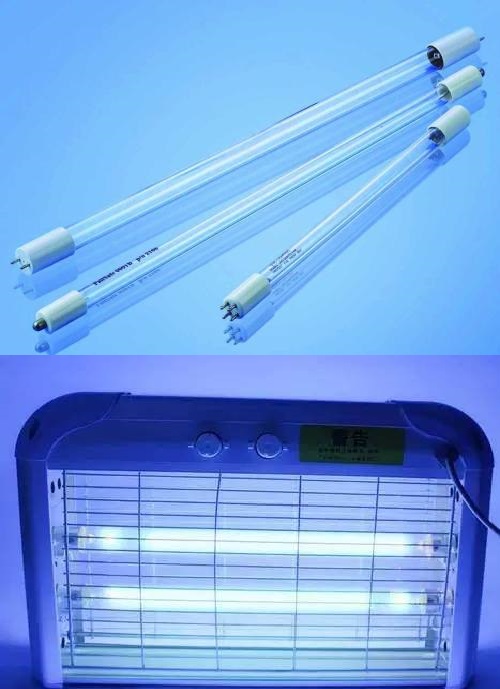Domestic application and status quo of ultraviolet germicidal lamps.
Principle of UV germicidal lamp:
Ultraviolet germicidal lamps can output enough UVC intensity for engineering disinfection only artificial mercury (alloy) light source.
Composition of UV germicidal lamp:
The lamp tube of the ultraviolet germicidal lamp is made of quartz glass, and the mercury lamp varies according to the mercury vapor pressure and the ultraviolet output intensity in the lamp after lighting.
UV germicidal lamp classification:
There are three types of ultraviolet germicidal lamps: low-pressure low-intensity mercury lamps, medium-pressure high-intensity mercury lamps, and low-pressure high-intensity mercury lamps.
UV germicidal lamp effect:
The germicidal effect of the ultraviolet germicidal lamp is determined by the radiation dose received by the microorganisms. At the same time, it also receives the output energy of ultraviolet rays, which is related to the type of lamp, light intensity and use time. As the lamp ages, it will lose 30%-50 %Strength of. Ultraviolet radiation dose refers to the amount of ultraviolet light of a specific wavelength that is required to achieve a certain bacterial inactivation rate: radiation dose (J/m2) = radiation time (s) × UVC intensity (W/m2) The larger the radiation dose, the greater the disinfection efficiency High, due to equipment size requirements, the general irradiation time is only a few seconds, therefore, the UVC output intensity of the lamp tube becomes the most important parameter to measure the performance of ultraviolet light disinfection equipment. In the disinfection of urban sewage, the average radiation dose is generally above 300 J/m2. Below this value, the phenomenon of light resurrection may occur, that is, the germs cannot be completely killed. When they flow out of the channel and receive visible light, they will be revived, reducing the sterilization effect. The higher the requirement for sterilization efficiency, the greater the radiation dose required. The main factor influencing the microbes to receive sufficient ultraviolet radiation dose is the light transmittance (254nm). When the UVC output intensity and irradiation time are constant, the change in light transmittance will cause the actual dose of the microorganisms to change.


Advantages of UV germicidal lamp:
Most UV devices use traditional low-pressure UV lamp technology, and some large water plants use low-pressure high-intensity UV lamp systems and medium-pressure high-intensity UV lamp systems. The high-intensity UV may reduce the number of tubes by more than 90%, thus The footprint is reduced, installation and maintenance costs are saved, and the ultraviolet disinfection method is also suitable for effluent with poor water quality.
Current status of ultraviolet germicidal lamps:
At present, there are few domestic research, production and application of ultraviolet disinfection device for sewage. The static and dynamic tests of the ultraviolet germicidal lamp have determined the relationship between the ultraviolet dose and the survival rate of bacteria, and designed a turbulent ultraviolet sterilizer. The modular open sterilizer can be specifically designed and installed according to user needs.


